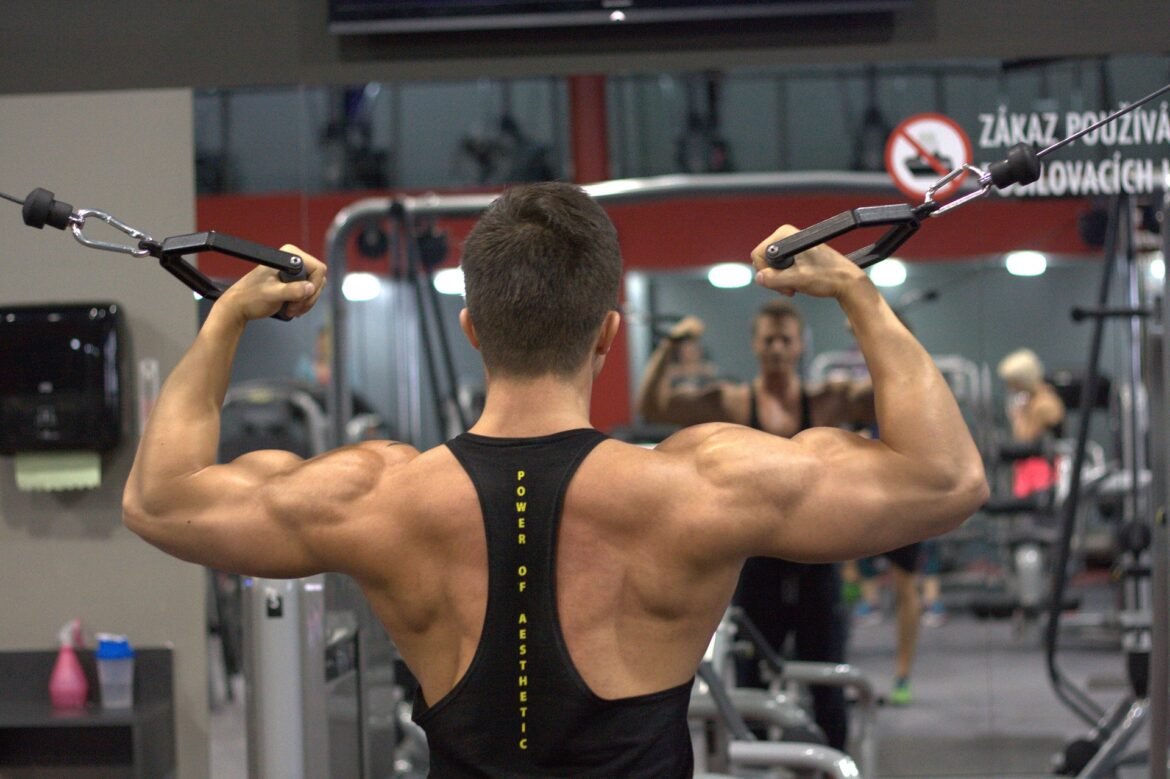Pull-Ups
Pull-ups are one of the most effective upper body exercises for building strength and muscle. They are a staple in many strength training and calisthenics routines due to their ability to target multiple muscle groups. Whether you are a beginner or an advanced athlete, mastering pull-ups can significantly enhance your overall fitness level.
It involves hanging from a bar with an overhand grip and pulling your body up until your chin is above the bar. This compound exercise engages several muscle groups simultaneously, making it a powerful tool for building upper body strength and endurance. Pull-ups can be performed with various grip widths and hand positions to target different muscle groups and add variety to your workout.
Targeted Muscle Groups

Primary Muscles:
- Latissimus Dorsi (Back): The latissimus dorsi, or “lats,” are the primary muscles engaged during the pull-up. They are responsible for the pulling motion and are essential for creating a V-shaped back.
- Biceps Brachii (Arms): The biceps are heavily involved in the pulling motion, helping to flex the elbows and lift your body.
Secondary Muscles:
- Rhomboids and Trapezius (Upper Back): These muscles work to stabilize and retract the shoulder blades during the pull-up.
- Infraspinatus and Teres Major (Shoulders): These rotator cuff muscles assist in stabilizing the shoulder joint and contribute to the pulling motion.
- Core Muscles: The abdominal and lower back muscles engage to stabilize your body throughout the exercise.
Equipment Needed
- Pull-Up Bar: A sturdy bar is essential for performing pull-ups. This can be a fixed bar in a gym, a door-mounted pull-up bar, or a bar in a park.
- Chalk (Optional): Helps to improve grip by reducing sweat and improving friction.
- Resistance Bands (Optional): These can be used to assist beginners or to perform variations of the exercise.
How to Perform the Pull-Up: Step-by-Step Guide
Step 1: Warm-Up
- Dynamic Stretching: Begin with dynamic stretches targeting your shoulders, back, and arms. This helps increase blood flow and reduce the risk of injury.

Muscles used in the military press.
Illustration credit © Aliaksandr Makatserchyk
Step 2: Grip the Bar
- Hand Placement: Grasp the pull-up bar with an overhand grip (palms facing away from you) and hands slightly wider than shoulder-width apart. For variations, try different grips like chin-ups (palms facing you) or neutral grip (palms facing each other).
Step 3: Hang with Full Extension
- Body Position: Hang from the bar with your arms fully extended and legs slightly bent or crossed at the ankles. Engage your core to maintain stability and prevent swinging.
Step 4: Pull Up
- Engage the Back: Pull your body up towards the bar by engaging your lats and biceps. Focus on bringing your chest to the bar and keeping your shoulders down and away from your ears.
Step 5: Complete the Pull-Up
- Chin Above Bar: Continue pulling until your chin is above the bar. Ensure a controlled movement throughout the ascent and descent.
Step 6: Lower Down
- Controlled Descent: Lower your body back down with control, fully extending your arms at the bottom. Avoid letting your body swing or using momentum to pull yourself up.
Step 7: Repeat
- Perform Reps: Complete the desired number of repetitions while maintaining proper form throughout the set.
Recommended Reps and Sets
- Beginners: 3 sets of 3-5 reps with assistance if needed (e.g., using resistance bands).
- Intermediate: 4 sets of 6-10 reps. Focus on increasing reps and improving form.
- Advanced: 4-5 sets of 10-15 reps. Incorporate variations like weighted pull-ups or different grips for added challenges.
Pro Tips for Success
- Perfect Your Form: Focus on maintaining proper form throughout the exercise. Keep your shoulders engaged and avoid swinging or using momentum.
- Use Full Range of Motion: Ensure you fully extend your arms at the bottom and pull your chin above the bar at the top of the movement.
- Incorporate Variations: To target different muscle groups and prevent plateaus, include variations like chin-ups, neutral grip pull-ups, or weighted pull-ups in your routine.
- Strengthen Your Core: A strong core is crucial for stability during pull-ups. Incorporate core exercises like planks and leg raises into your routine.
- Gradual Progression: If you’re struggling with pull-ups, use resistance bands or perform negative pull-ups (slowly lowering yourself) to build strength.
Common Mistakes to Avoid
- Using Momentum: Avoid using momentum or swinging to complete the movement. Focus on a controlled ascent and descent to effectively target the muscles.
- Partial Range of Motion: Failing to fully extend your arms or complete the pull-up can reduce the effectiveness of the exercise. Ensure full range of motion.
- Shoulder Shrugging: Keep your shoulders away from your ears and engage your back muscles to avoid shoulder strain.
- Inadequate Warm-Up: Skipping a proper warm-up can lead to injury. Always warm up before performing pull-ups.
- Overtraining: Performing pull-ups too frequently without adequate recovery can lead to overtraining and potential injury. Allow time for rest and recovery between sessions.
Pull-ups are an exceptional exercise for building upper body strength and enhancing muscle definition. By engaging multiple muscle groups, they provide a comprehensive workout for the back, arms, and core. Focusing on proper form, gradually increasing difficulty, and incorporating variations can help you maximize the benefits of pull-ups. Avoid common mistakes and prioritize a solid warm-up to ensure safe and effective training. Incorporate pull-ups into your fitness routine to achieve impressive strength gains and improve overall upper-body performance.
